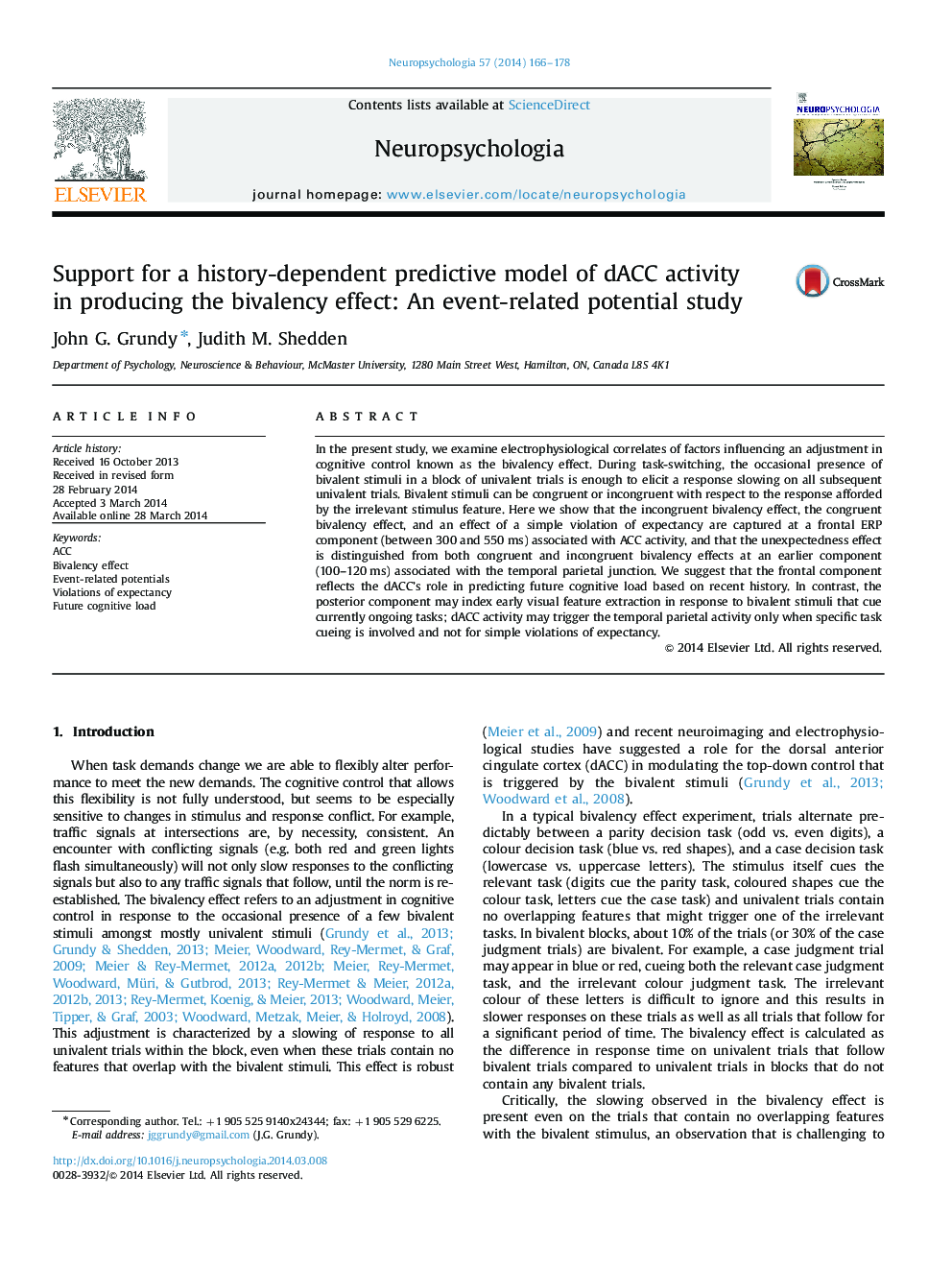| کد مقاله | کد نشریه | سال انتشار | مقاله انگلیسی | نسخه تمام متن |
|---|---|---|---|---|
| 7321483 | 1475596 | 2014 | 13 صفحه PDF | دانلود رایگان |
عنوان انگلیسی مقاله ISI
Support for a history-dependent predictive model of dACC activity in producing the bivalency effect: An event-related potential study
دانلود مقاله + سفارش ترجمه
دانلود مقاله ISI انگلیسی
رایگان برای ایرانیان
موضوعات مرتبط
علوم زیستی و بیوفناوری
علم عصب شناسی
علوم اعصاب رفتاری
پیش نمایش صفحه اول مقاله

چکیده انگلیسی
In the present study, we examine electrophysiological correlates of factors influencing an adjustment in cognitive control known as the bivalency effect. During task-switching, the occasional presence of bivalent stimuli in a block of univalent trials is enough to elicit a response slowing on all subsequent univalent trials. Bivalent stimuli can be congruent or incongruent with respect to the response afforded by the irrelevant stimulus feature. Here we show that the incongruent bivalency effect, the congruent bivalency effect, and an effect of a simple violation of expectancy are captured at a frontal ERP component (between 300 and 550Â ms) associated with ACC activity, and that the unexpectedness effect is distinguished from both congruent and incongruent bivalency effects at an earlier component (100-120Â ms) associated with the temporal parietal junction. We suggest that the frontal component reflects the dACC's role in predicting future cognitive load based on recent history. In contrast, the posterior component may index early visual feature extraction in response to bivalent stimuli that cue currently ongoing tasks; dACC activity may trigger the temporal parietal activity only when specific task cueing is involved and not for simple violations of expectancy.
ناشر
Database: Elsevier - ScienceDirect (ساینس دایرکت)
Journal: Neuropsychologia - Volume 57, May 2014, Pages 166-178
Journal: Neuropsychologia - Volume 57, May 2014, Pages 166-178
نویسندگان
John G. Grundy, Judith M. Shedden,